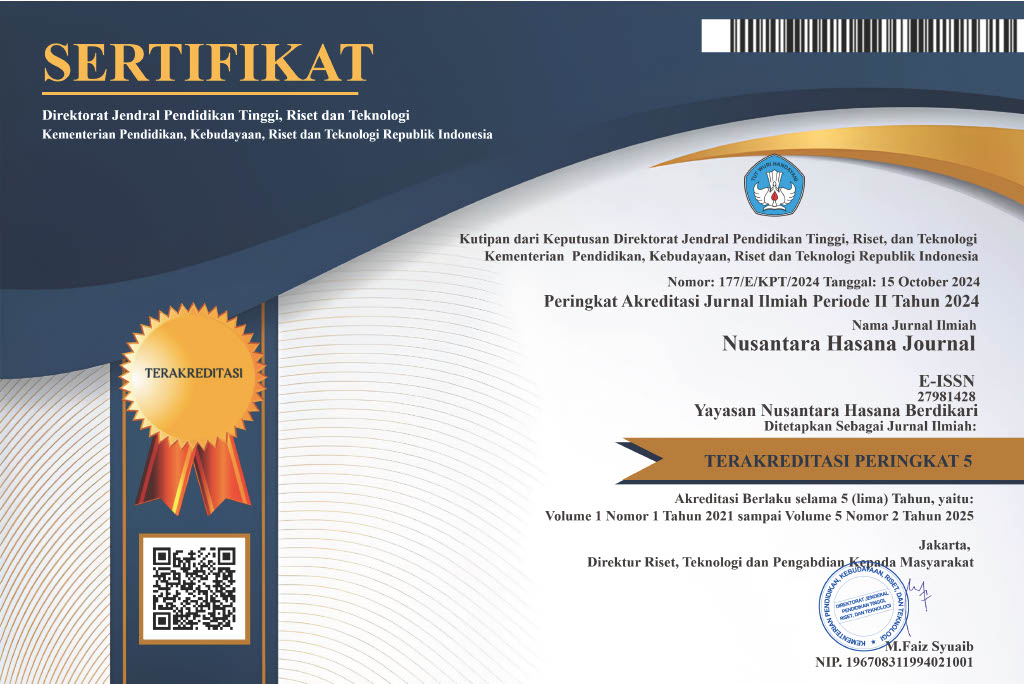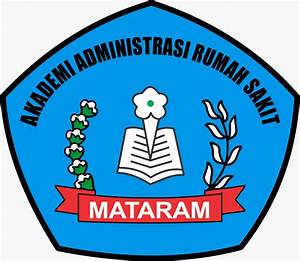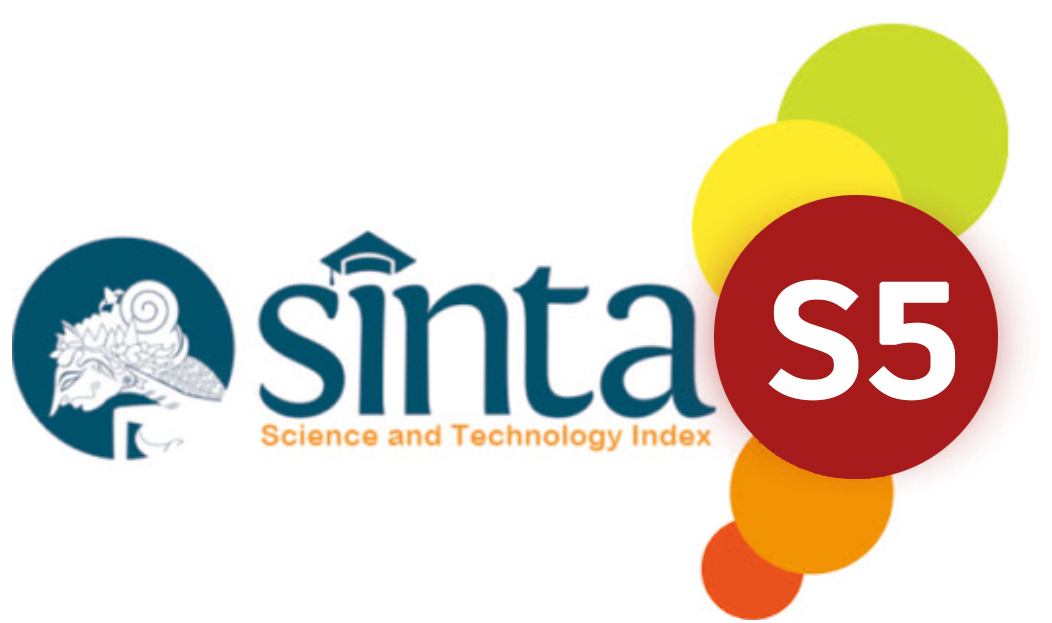PROFIL HEMOGLOBIN, LINGKAR LENGAN ATAS, DAN PENGETAHUAN IBU HAMIL SEBAGAI INDIKATOR ANEMIA: STUDI DESKRIPTIF DI PUSKESMAS NARAS
DOI:
https://doi.org/10.59003/nhj.v4i12.1438Keywords:
Anemia, Hemoglobin, Mid-Upper Arm Circumference, Knowledge, Iron Tablets, PregnancyAbstract
Anemia during pregnancy remains a significant public health problem with serious consequences for both mother and fetus. Nutritional status, level of knowledge, and adherence to iron supplementation are known to be associated with the incidence of anemia. This study aimed to evaluate hemoglobin levels, mid-upper arm circumference (MUAC), and maternal knowledge as indicators of anemia in pregnant women at the Naras Primary Health Center. This descriptive study employed a cross-sectional approach involving 71 pregnant women selected through consecutive sampling. Data collection included hemoglobin measurement using a hematology analyzer, MUAC measurement with a standard anthropometric tape, and structured interviews to assess knowledge level and adherence to iron tablet supplementation. The findings revealed that 52.1% of the respondents were anemic (Hb <11 g/dL), 36.6% had poor nutritional status (MUAC <23.5 cm), and 40.8% had low knowledge about anemia. Additionally, 36.6% of the respondents were non-adherent to iron tablet consumption. Anemia in pregnant women at the Naras Health Center is multifactorial and closely related to nutritional status, knowledge, and adherence to supplementation. Integrated interventions through nutrition education, regular monitoring of nutritional status, and continuous support from health workers are essential to reduce the prevalence of anemia during pregnancy.
Downloads
References
M. K. Georgieff, “Iron deficiency in pregnancy,” Am. J. Obstet. Gynecol., vol. 223, no. 4, pp. 516–524, 2020, doi: 10.1016/j.ajog.2020.03.006.
World Health Organization, “Anaemia in Women and Children: Estimates by Country.” [Online]. Available: https://www.who.int/data/gho/data/themes/topics/anaemia_in_women_and_children
Endang Wahyuningsih, L. Hartati, and W. Dewi Puspita, “Analisis Resiko Kejadian Anemia pada Ibu Hamil,” Prof. Heal. J., vol. 4, no. 2, pp. 303–313, 2023, doi: 10.54832/phj.v4i2.388.
R. Wang et al., “Anemia during pregnancy and adverse pregnancy outcomes: a systematic review and meta-analysis of cohort studies,” Front. Glob. Women’s Heal., vol. 6, no. January, 2025, doi: 10.3389/fgwh.2025.1502585.
D. P. Putri, A. Kusyani, and Gilang Akbar Shobirin, “Hubungan Status Gizi (LILA) dengan Anemia pada Ibu Hamil,” J. Keperawatan, vol. 21, no. 2, pp. 103–111, 2023.
R. A. Rahman and N. A. Fajar, “Analisis Faktor Risiko Kejadian Anemia pada Remaja Putri: Literatur Review,” J. Kesehat. komunitas (Journal community Heal., vol. 10, no. 1, pp. 133–140, 2024, doi: 10.25311/keskom.vol10.iss1.1403.
V. Zaliyanti, P. Mahardika Herlambang, and W. Fatmawati, “Factors Affecting The Incidence Of Anemia In Third Trimester Pregnant Women At Purwoharjo Health Center,” Pemalang Dist., vol. 7, no. 1, pp. 71–82, 2024.
Pirlina Umiastuti et al., “The Relationship Between Anemia in Pregnant Women and The Incidence of Preeclampsia in Indonesia : A Systematic Review,” J. Community Med. Public Heal. Res., vol. 5, no. 1, pp. 99–111, 2024, doi: 10.20473/jcmphr.v5i1.50098.
U. Azmi and Y. Puspitasari, “Literature Review : Risk Factors of Anemia in Pregnancy Women,” J. Qual. Public Heal., vol. 6, no. 1, pp. 244–256, 2022, [Online]. Available: https://doi.org/10.30994/jqph.v6i1.428
U. Sugiarsih, “Characteristics of pregnant women with anemia,” vol. 15, no. November, pp. 16–17, 2022, doi: 10.54209/eduhealth.v15i04.
A. K. Ramadhan, A. Danianto, and R. Cholidah, “Jurnal Biologi Tropis Anemia in Pregnancy : Cause and Effect,” J. Biol. Trop., vol. 2, no. 1, 2023.
A. Nuristigfarin and I. M. Rifkiyatul Islami, “Hubungan Kepatuhan Konsumsi Tablet Fe Dengan Kejadian Anemia pada Ibu Hamil,” J. Impresi Indones., vol. 1, no. 12, pp. 1252–1265, 2022, doi: 10.58344/jii.v1i12.746.
E. Gamboa et al., “Interpersonal communication campaign promoting knowledge, attitude, intention, and consumption of iron folic acid tablets and iron rich foods among pregnant Indonesian women,” Asia Pac. J. Clin. Nutr., vol. 29, no. 3, pp. 545–551, 2020, doi: 10.6133/apjcn.202009_29(3).0013.
A. Noviyana, “Peran Bidan Dalam Pemberian Suplementasi Tablet Tambah Darah (Ttd) Untuk Pencegahan Anemia Ibu Hamil Di Puskesmas II Kembaran Kabupaten Banyumas,” Viva Med. J. Kesehatan, Kebidanan dan Keperawatan, vol. 11, no. 02, pp. 97–103, 2019, doi: 10.35960/vm.v11i02.474.
C. Obianeli, K. Afifi, S. Stanworth, and D. Churchill, “Iron Deficiency Anaemia in Pregnancy: A Narrative Review from a Clinical Perspective,” Diagnostics, vol. 14, no. 20, pp. 1–17, 2024, doi: 10.3390/diagnostics14202306.
R. Ataide, K. Fielding, S.-R. Pasricha, and C. Bennett, “Iron deficiency, pregnancy, and neonatal development,” Int. J. Gynecol. & Obstet., vol. 162, no. S2, pp. 14–22, 2023, doi: https://doi.org/10.1002/ijgo.14944.
F. Adhimukti, U. R. Budihastuti, and B. Murti, “Meta-Analysis: The Effect of Anemia in Pregnant Women on the Risk of Postpartum Bleeding and Low Birth Weight,” J. Matern. Child Heal., vol. 8, no. 1, pp. 58–69, 2023, doi: 10.26911/thejmch.2023.08.01.06.
Downloads
Published
How to Cite
Issue
Section
License
Copyright (c) 2025 Ashifa Taurisia

This work is licensed under a Creative Commons Attribution-NonCommercial-ShareAlike 4.0 International License.
NHJ is licensed under a Creative Commons Attribution-NonCommercial-ShareAlike 4.0 International License.
Articles in this journal are Open Access articles published under the Creative Commons CC BY-NC-SA License This license permits use, distribution and reproduction in any medium for non-commercial purposes only, provided the original work and source is properly cited.
Any derivative of the original must be distributed under the same license as the original.
























